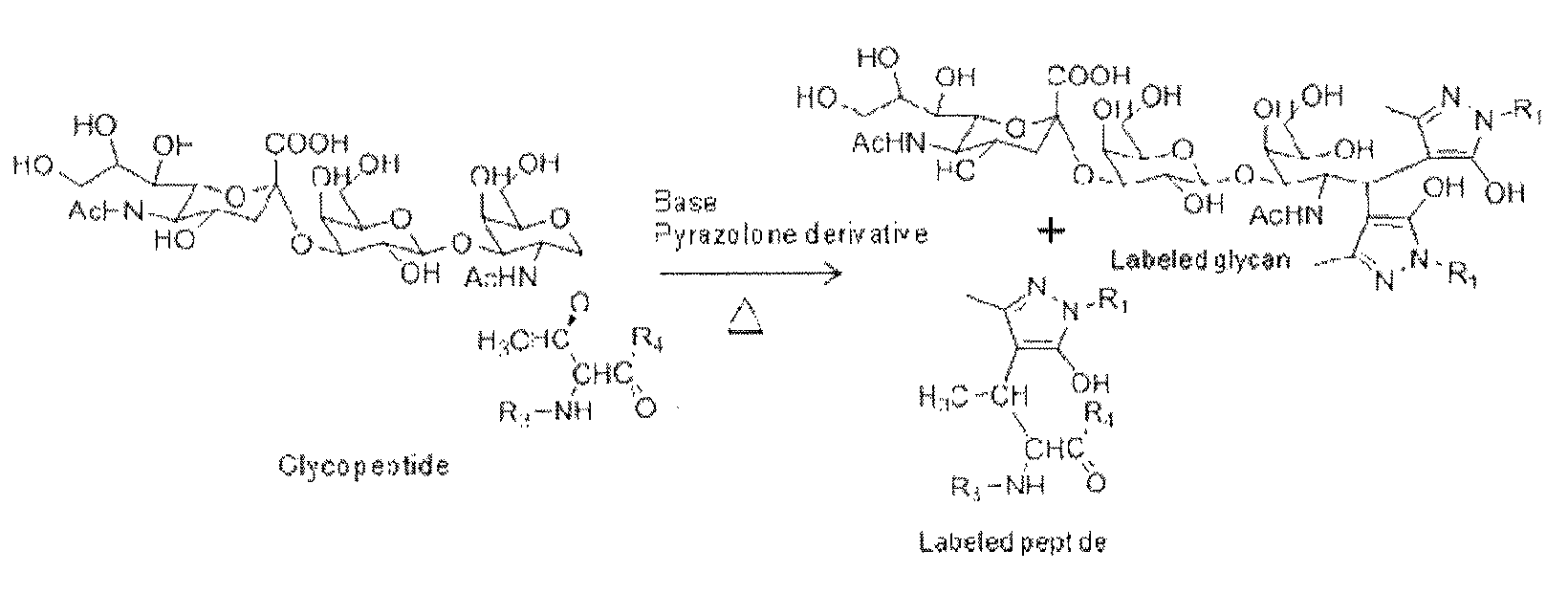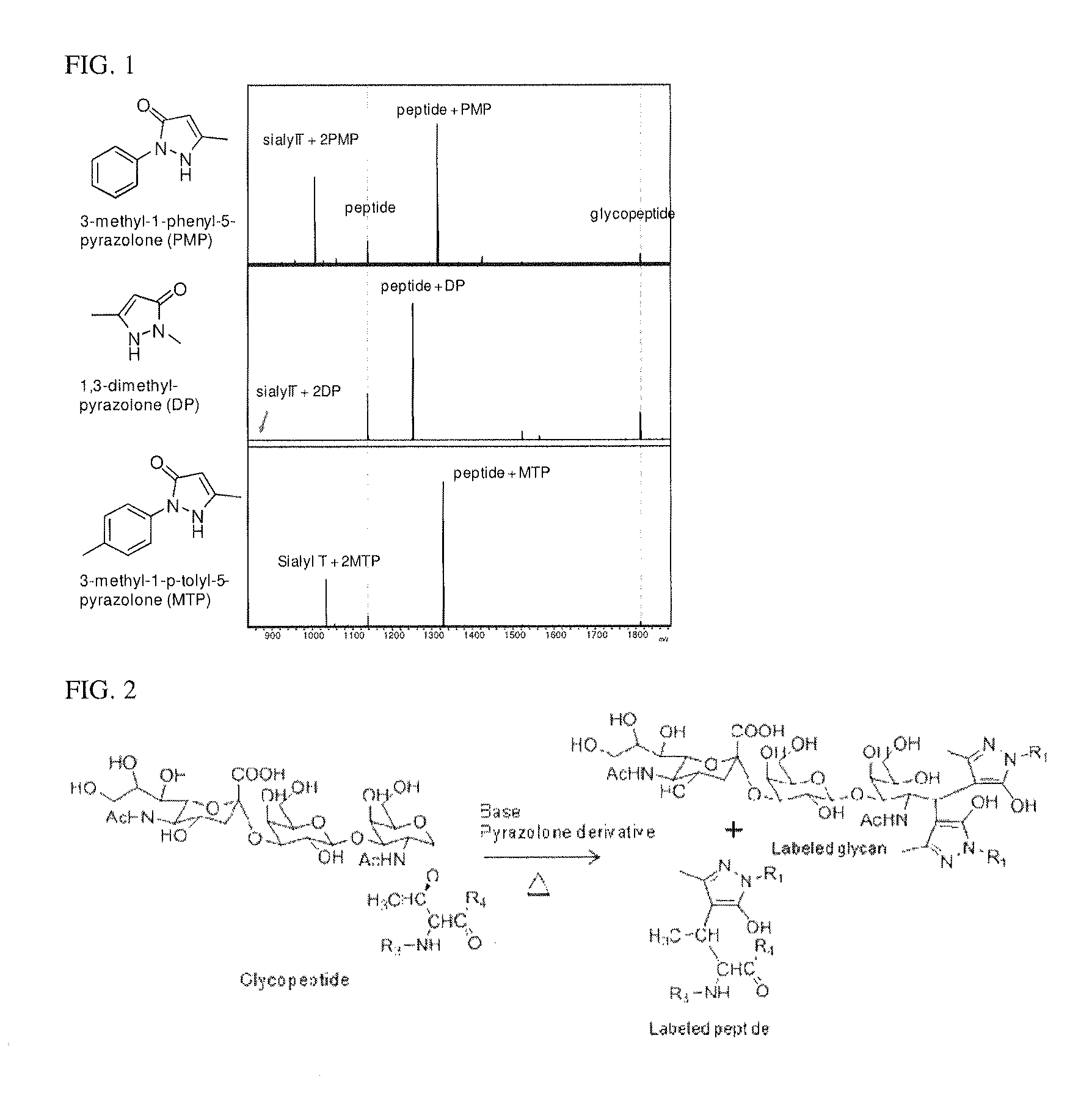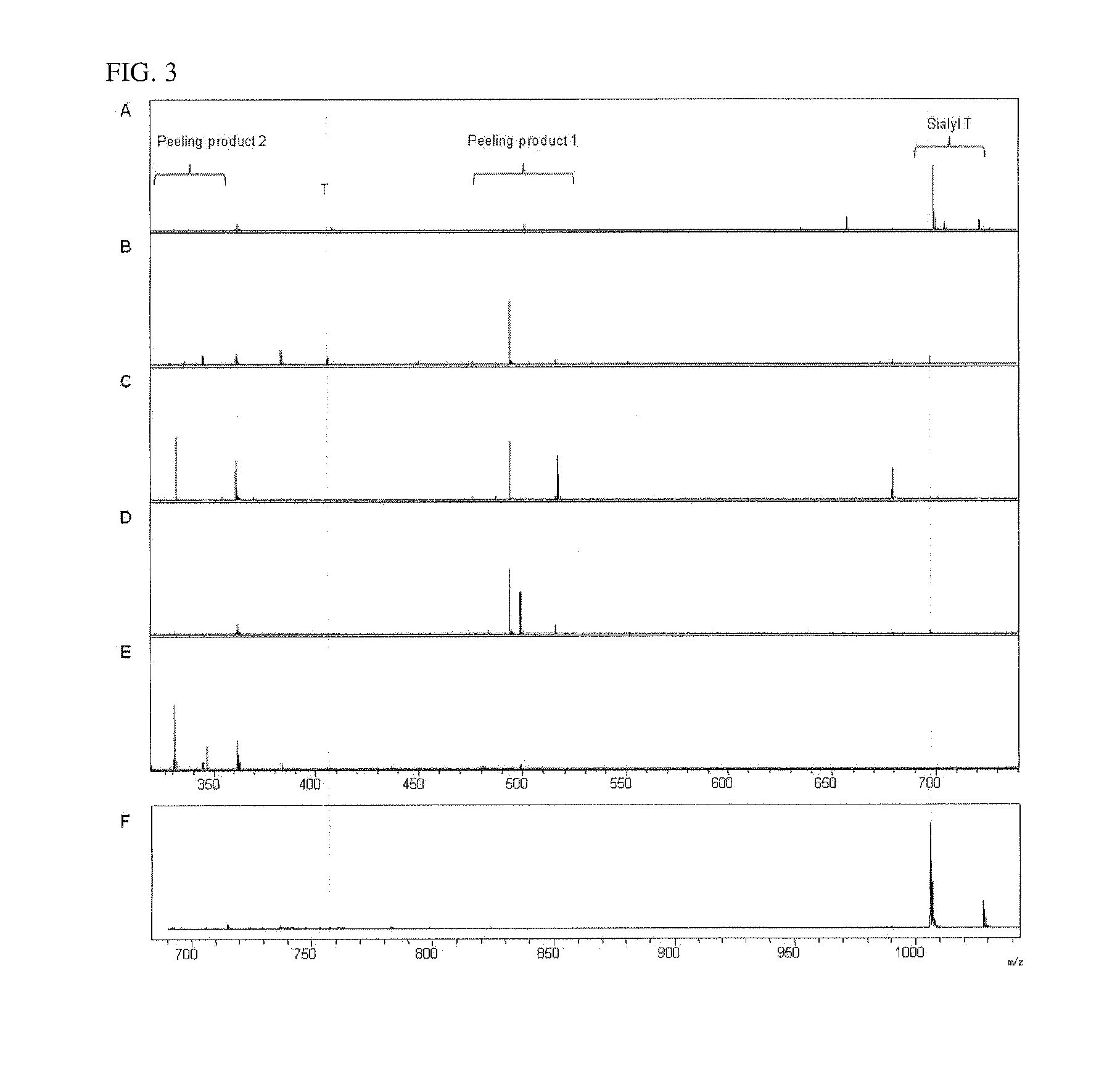Labeling agent for analyzing post-translational modifications of serine and threonine
- Summary
- Abstract
- Description
- Claims
- Application Information
AI Technical Summary
Benefits of technology
Problems solved by technology
Method used
Image
Examples
example 1
Test Description 1
[0046]Glycopeptides having O-GalNAcylated sugar chains were synthesized as previously reported. To each aqueous solution of the glycopeptides (4 μg / mL, 5 mL), 45 μL, of water, 50 μLi, of 0.6 M NaOH, as well as 100 μLi, of a methanol solution of 0.5 M 3-methyl-1-phenyl-5-pyrazolone (PMP), or an aqueous solution of 0.5 M 1,3-dimethyl-5-pyrazolone (DP), or a methanol solution of 0.5 M 3-methyl-1-p-tolyl-5-pyrazolone (MTP) was added respectively, and the respective mixtures were allowed to stand at 70° C. for 16 hours. After completion of the reaction, the reaction mixtures were neutralized with 0.3 M hydrochloric acid and directly mixed with 2,5-dihydrobenzoic acid (10 mg / mL), and the mixtures were analyzed by MALDI-TOF( / TOF) (UltraFlex II, Bruker).
example 2
[0048]Glycopeptides having O-GalNAcylated sugar chains were subjected to release of the sugar chains by various existing methods, and the sugar chain profiles obtained during these processes were compared. The obtained mass spectrometry results are shown in FIG. 3. The glycopeptides used were found to mainly comprise trisaccharides called “siaryl-T” (Neu5Acα2-3Galβ1-3GalNAc) and contain trace amounts of disaccharides called “T-antigen” (Gal[3]-3GalNAc). FIG. 3A shows the sugar chain profile obtained by the Carlson method in which simultaneously with β-elimination, the reducing terminals of the sugar chains were reduced to sugar alcohol in the presence of a reducing agent (NaBH4) to prevent degradation of the sugar chains. The peaks for siaryl-T and T-antigen were observed but those for the degradation products were present only in trace amounts. FIGS. 3B and 3C show the results obtained by releasing the sugar chains under the two recommended types of conditions using the β-eliminati...
example 3
[0050]FIGS. 4, 5 and 6 respectively show the TOF / TOF spectra of the peptides labeled with DP, PMP, or MTP, respectively in Example 1. Any of these samples gave satisfactory information on peptide sequences and about the modification positions of the sugar chains. These results demonstrated that β-elimination reaction in the presence of a pyrazolone derivative satisfactorily yields the information on the structures and sequences of the sugar chains and peptides.
PUM
 Login to View More
Login to View More Abstract
Description
Claims
Application Information
 Login to View More
Login to View More - R&D
- Intellectual Property
- Life Sciences
- Materials
- Tech Scout
- Unparalleled Data Quality
- Higher Quality Content
- 60% Fewer Hallucinations
Browse by: Latest US Patents, China's latest patents, Technical Efficacy Thesaurus, Application Domain, Technology Topic, Popular Technical Reports.
© 2025 PatSnap. All rights reserved.Legal|Privacy policy|Modern Slavery Act Transparency Statement|Sitemap|About US| Contact US: help@patsnap.com



